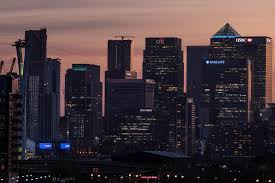Around £11 billion a year could be raised from an Alternative Minimum Tax rate based on the total amount of income and capital gains that a person reports before applying any deductions or reliefs, according to new research which has gained unprecedented access to the tax records of the UK’s richest individuals.
The study, by LSE and the University of Warwick, analysed the anonymised personal tax returns of every UK resident who received more than £100,000 a year in income or capital gains and discovered that many are paying extremely low tax rates, lower even than people on modest incomes. This is due to the way the tax system is designed rather than avoidance or evasion.
One of the most striking findings is that those receiving £10 million effectively paid just a 21 per cent tax rate on average. This is driven by large variation in rates even amongst the very rich, with some paying close to the headline rate on earnings of 47 per cent and others paying just 11 per cent: lower than people earning £15,000.
With Covid-19 placing unprecedented demands on public spending, tax rises appear ‘inevitable’, the report says. It adds: “A key choice is between increasing taxes that affect almost everyone – VAT, National Insurance Contributions, the basic rate of Income Tax – versus targeting tax rises on the richest. But the rich, it is often pointed out, already pay a lot of tax: a frequently cited statistic is that the top 1 per cent pay nearly 30 per cent of all Income Tax. Is it fair, or even possible, to require that they pay more?”
The research, by Arun Advani of Warwick and Andy Summers of LSE, sheds new light on this question by revealing that even though the top one per cent pay a large amount of income tax, this is largely due to a substantial cohort of high-earning employees who pay close to the ‘headline’ rate, i.e. the top rate of 45 per cent Income Tax plus 2 per cent National Insurance Contributions that this group is typically assumed to pay on each pound received above £150,000.
Dr Advani and Dr Summers focused on people’s ‘effective’ average tax rates, i.e. the total tax they pay as a percentage of the total remuneration (taxable income and capital gains) that they receive. The difference between the headline rate and the effective rate is due to the much lower tax rates on dividends and capital gains, as well as deductions and reliefs. These are ways of structuring remuneration that largely benefit the richest, the report says.
It explains: “A substantial minority of the UK’s richest individuals – mainly investors and business owners – paid extremely low effective rates: much lower than others at the same level of remuneration, and lower even than people on modest earnings.” The authors emphasise that this is due to structural policy choices rather than bad behaviour from individual taxpayers.
The report says up to £20 billion a year could be raised from taxing all income and capital gains at the same rate as earnings. It proposes an Alternative Minimum Tax rate which would raise around £11 billion from those best able to afford it, without raising taxes on those who already pay the highest shares, and whilst minimising the scope for avoidance.







